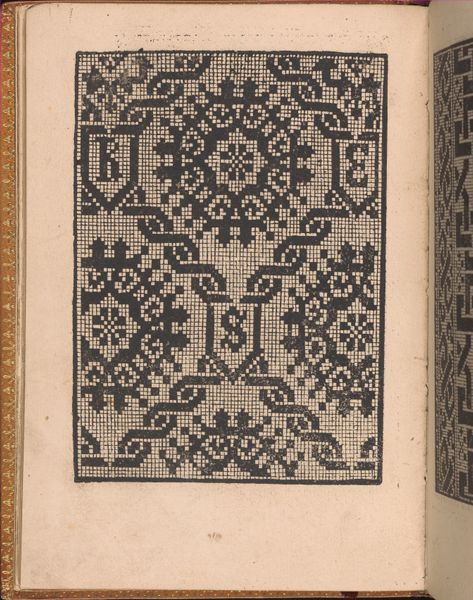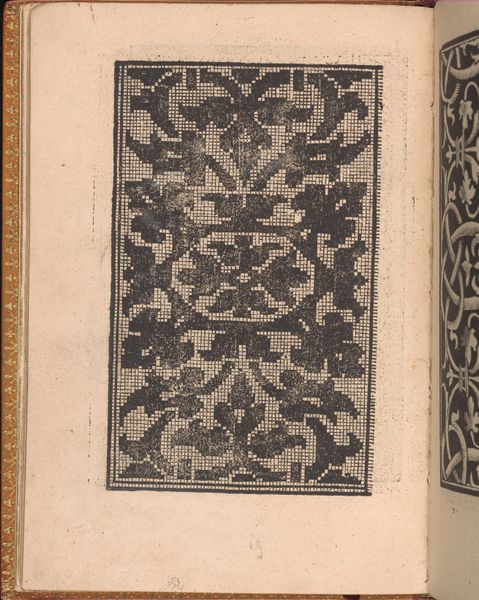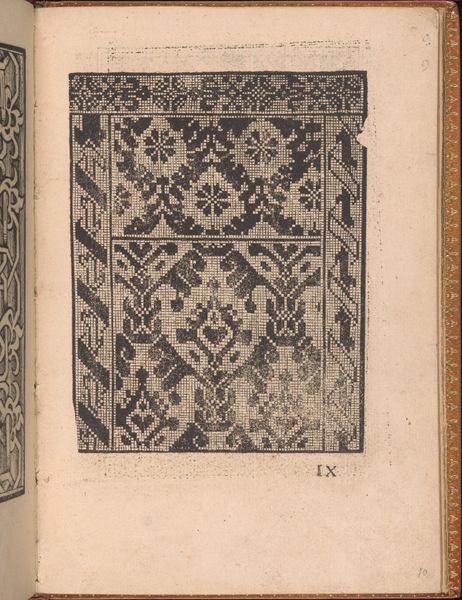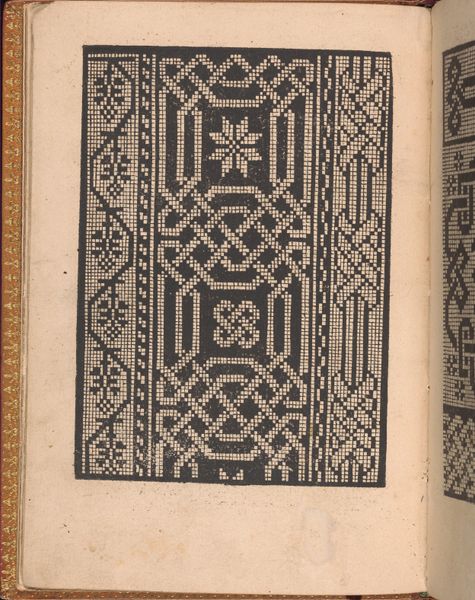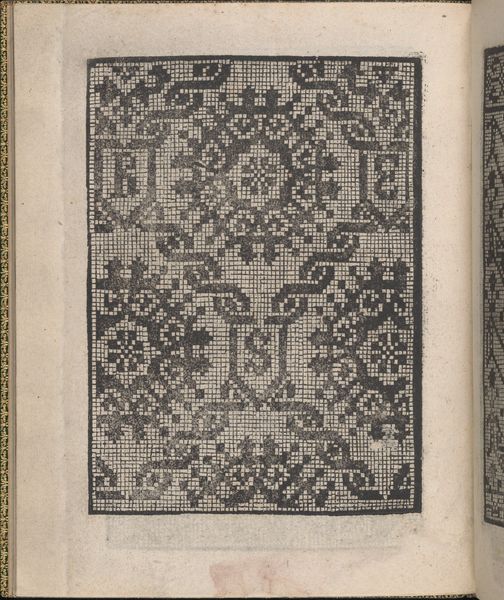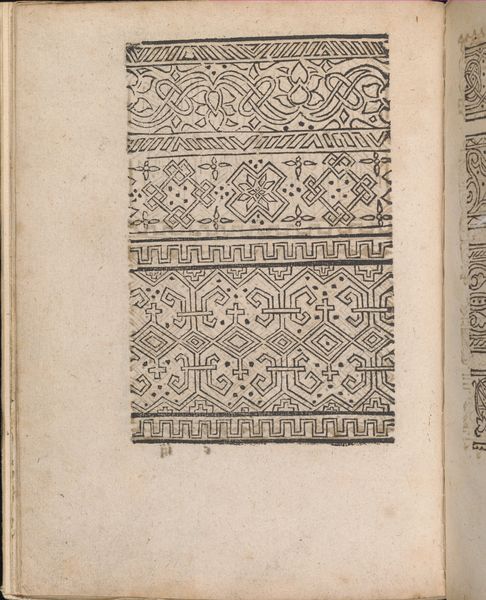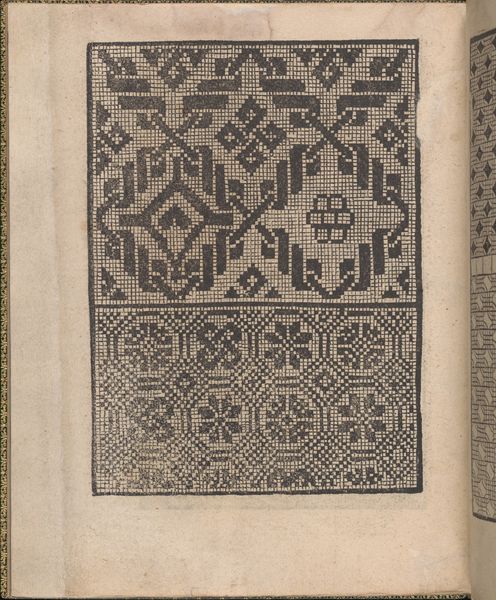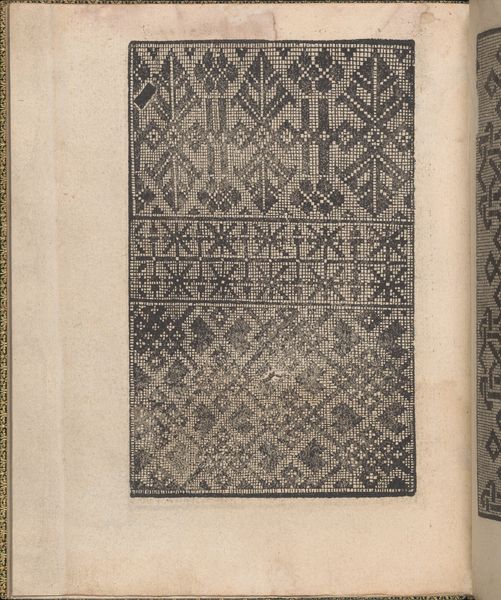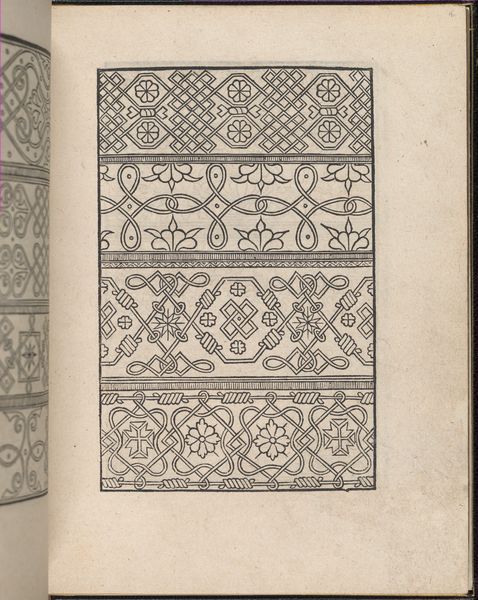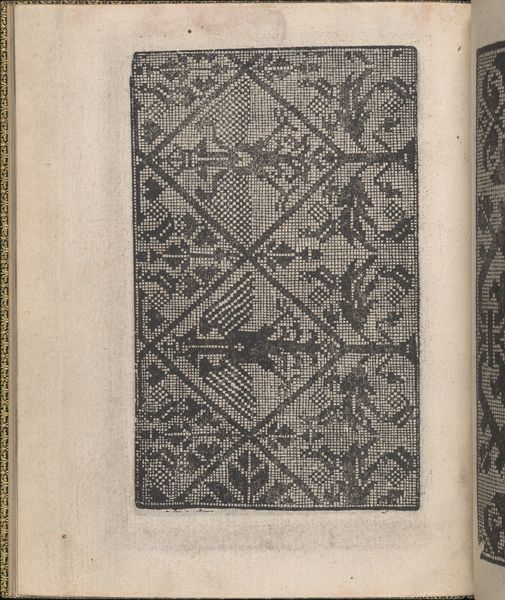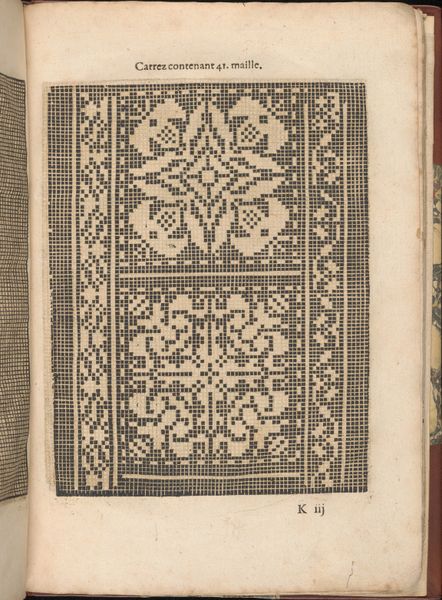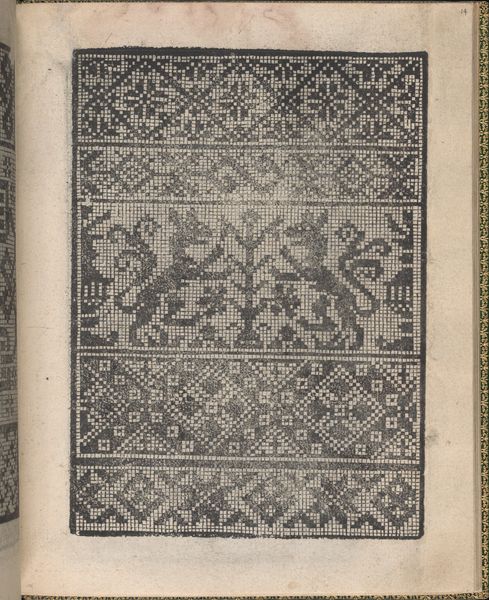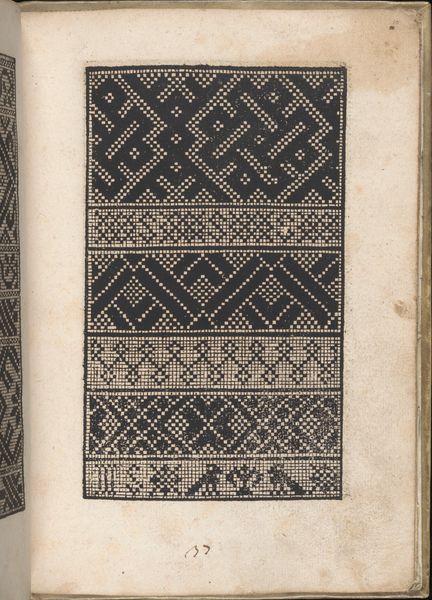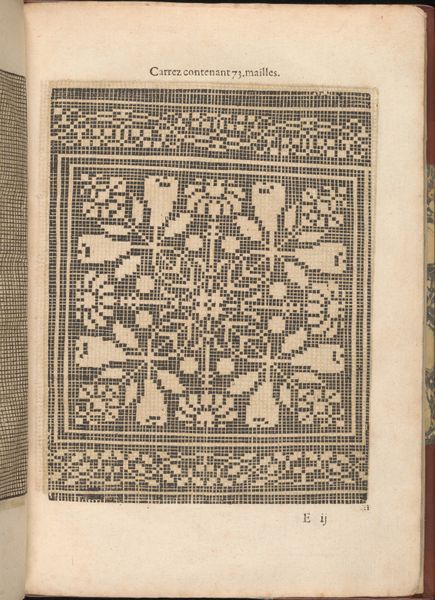
print, paper, woodcut
# print
#
paper
#
linocut print
#
geometric
#
woodcut
Dimensions: Overall: 7 7/8 x 5 1/2 in. (20 x 14 cm)
Copyright: Public Domain
Curator: Here we have a page from "Convivio delle Belle Donne," or "A Gathering of Beautiful Women," created by Nicolò Zoppino in 1532. It resides now at the Metropolitan Museum of Art. Editor: It's visually striking; almost hypnotic! The density of the pattern, rendered in such stark black and white, draws the eye immediately. There’s something incredibly grounding about its systematic construction. Curator: Precisely! It's a woodcut and drawing intended as an ornament and likely printed onto paper. Considering its context, it represents the blossoming of pattern books, instrumental in disseminating designs for textiles, embroidery, and lace. We must think about the practical application of such images; this wasn't just for aesthetic appreciation. Editor: And consider the symbolism embedded here. Recurring motifs, like the vase from which springs organic, vine-like patterns: water, fertility, regeneration... repeated for impact and instruction. These patterns served to reinforce and broadcast those meanings within the broader culture. The floral elements might even symbolize something about the specific status, or virtues, desired for these “belle donne." Curator: I'm more intrigued by the material labor implied by its construction. Someone had to carve the woodblock for printing. And imagine the nimble fingers replicating the design in thread, transforming the visual language into tangible form. What value do we give the handcraft tradition here? How can we assess it outside of our typical Renaissance artwork analysis, placing emphasis on skill, functionality and ultimately on democratization, where print allows greater access for artisans to build skills or apply decoration on their daily life, without aristocratic intervention. Editor: Agreed, that's a vital point! Though even in considering its purpose, you can't ignore the emotional resonance of this careful detailing, its repetitive rhythm; it functions, at a symbolic level, almost like a protective talisman—a codified aesthetic barrier erected for those using it. And those mirrored vases also present the beginning of self-reflection, a humanistic element for that "gathering of beautiful women". Curator: The social function embedded within this piece fascinates me. We see a link between artistry, production, and use within a community of practice. Editor: A compelling weave of the practical and symbolic, I'd say. Something about it holds you captive long after you move on from the case.
Comments
No comments
Be the first to comment and join the conversation on the ultimate creative platform.
